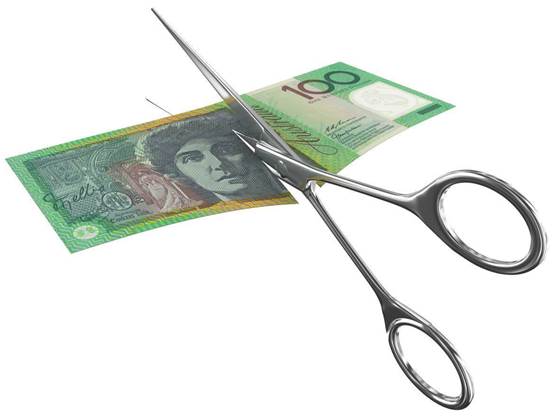The South Australian government has drastically scaled back its desktop outsourcing deal with IT services company DXC after projecting costs would blowout by as much as $80 million.

The consumption-based managed service arrangement, which was signed in early 2017 by the former Labor government, will now cover only a fraction of the agencies originally deemed in-scope.
Under the initial deal, DXC was to take over the end-user computing responsibilities, including the purchase of desktops and laptops, of all 17 state government agencies, with transition to be complete by February 2019.
The deal was aimed at reducing operating IT costs for agencies, with the then-Premier Jay Weatherill suggesting savings could reach $11 million a year.
But an audit report [pdf] released last week reveals the government has “decided that the EUC program ... not progress beyond tranche one”, citing revised costs.
The Department of the Premier and Cabinet (DPC) and SA Health were the only agencies to transition in tranche one. They were to be followed by the remaining 15 agencies on completion.
“This a significant reduction in scope for the EUC program from the original 17 agencies,” the report states.
“The 15 agencies that are now out of scope will need to develop alternative strategies for
managing their desktop environments in the long term.”
The audit put the revised cost of the program at $457 million over ten years or $317 million over seven years, instead of the $394 million and $280 million originally estimated.
The figures are based on an independent review of the program’s cost assumptions in August 2017 – less than a year after the original deal was inked – which identified “parts of the original business case were incorrect”.
“Since the EUC program started in February 2017, costs per in‐scope agency have continued to increase,” the audit states.
The independent review cited was the basis of the state’s Treasurer Rob Lucas bowling up another $48 million in funding for the first tranche of the program in September 2018. At the time, he said the deal could end up costing up to another $80 million.
After shrinking the scope of the program, however, the total cost of the program now sits at $246 million for DPC and SA Health over ten years or $175 million over seven years.
According to the audit, actual expenditure under the contract was only $21.4 million as at the end of June 2019, $19.6 million of which covered SA Health's component.
However, the state’s strategic procurement unit within the Department of Treasury and Finance has warned that “the total cost of the EUC program is likely to continue to change due to contract variations, delays in the transformation phase and current program challenges”.
“Due to these ongoing amendments to the EUC program, it is proposed that once the transformation activities for DPC and SA Health are completed, a revised estimated total EUC program cost will be calculated,” the report states.
Windows 10 migrations delays
One of the biggest reasons for ongoing complexity with the program is due to efforts by both DPC and SA Health to upgrade to Microsoft Windows 10.
“The transformation phase initially estimated that 80 percent of all end user devices for DPC and SA Health would be in place by 2018,” the report states.
“This target was revised due to difficulties in upgrading devices to the Windows 10 environment.”
The problems have forced DPC to delay its migration to DXC provided devices by three months, while SA Health still has around 2000 legacy devices that cannot be upgraded due to incompatible applications and hardware issues.
“Additional funding of around $5.5 million was provided to SA Health to help ensure that its current applications are Windows 10 compatible,” the report states.
“SA Health has since acknowledged that this additional funding may not be enough to perform this task, with more funding potentially required in future.”
“Any additional funding would further impact the total cost of the EUC program.”
Economies of scale
The decision to terminate future tranches of the program, as well as ongoing implementation delays, have also been cited for pushing up the cost of the program.
“The failure to achieve the contracted minimum volume level of 55,000 units through the termination of future tranches has resulted in an increased support cost of 7 percent” per device,” the report states.
This “reduced scope” and “revised financial modelling”, when taken with the incorrect initial assumptions, means that the “financial savings originally anticipated for the EUC program will not be achieved”.
While government is continuing to review and renegotiate the deal with DXC to minimise any further costs associated with the project, Treasury has said "current contract variation will not increase the cost of the contract with DXC".
These negotiations will focus on “contractual issues, operational progress, continuing challenges, risks and clarification of responsibilities by both parties”.
The audit office has said the program should continue to receive "close monitoring and ongoing strategic management to ensure that the implemented for DPC and SA Health is finalised within the revised budget and timelines".

























